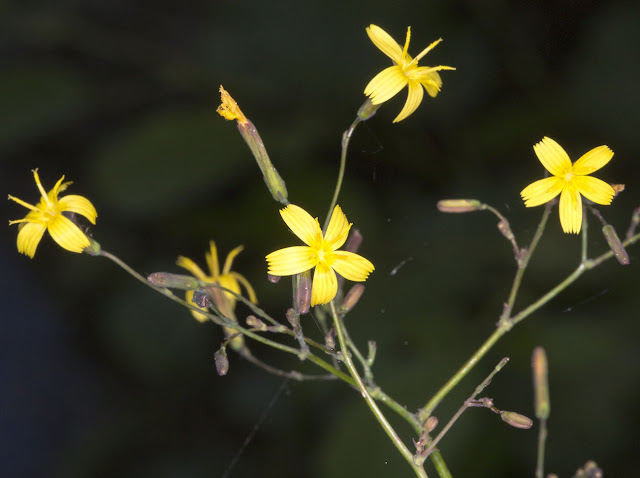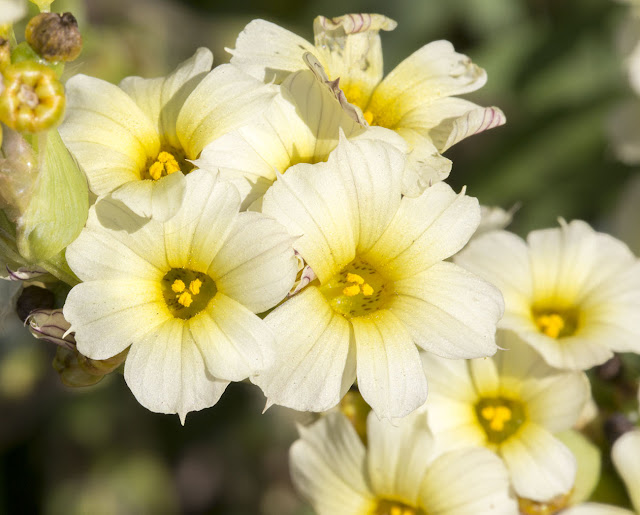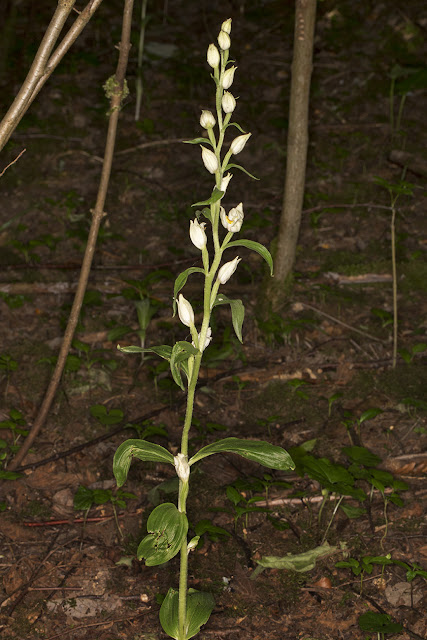 |
| Bee on a yellow Composite. Lasioglossum species. Hayes Street Farm, 18 June 2015. |
For the last two years I have been joining in a large project to record all the wild flowers in the Greater London area. Those who take part pick a monad, a one kilometer square, and walk round it during the year to see what can be found. You have to go round several times in different seasons to pick up everything.
I have two monads this year. One of them includes a couple of small suburban parks, a churchyard and graveyard, and some farmland. I have found some surprising plants here, some of them scarce in Kent. Of course, I also see insects, like the bee above, a Lasioglossum. I'm afraid I don't know the species.
 |
| Clustered Dock, Rumex conglomeratus, on Hayes Street Farm. 18 June 2015 |
Most docks are tricky to identify unless you can examine their seeds, but this one is easier. It has many branches that come off at nearly 90 degrees from an angled stem, and it is leafy almost right to the tip. It's Clustered Dock, and it usually grows in wet places, so I was surprised to find it next to a farm track. In fact I also found it in the pond mud in Husseywell Park. Here's a closeup:
 |
| Clustered Dock, Rumex conglomeratus, on Hayes Street Farm. 18 June 2015 |
Because it's not easy to see the details of the whole plant against the green background. This is a delicate and lovely little dock, quite unlike most of the others which are sometimes very large and cabbagey.
Husseywell Park also gave me a Wall Lettuce:
 |
| Wall Lettuce, Mycelis muralis, by the pond in Husseywell Park, Hayes. 18 June 2015. |
What called my attention to this, which at any distance is just another yellow composite, were the flowers:
 |
| Wall Lettuce, Mycelis muralis, by the pond in Husseywell Park, Hayes. 18 June 2015. |
They all have exactly five florets, a real giveaway. This is the first time I have found one of these in my area, so despite the rather ratty and mildewed look of this plant, I was delighted.
I also found this ...
 |
| Common Moorhen, Gallinula chloropus, in Husseywell Park, Hayes. 18 June 2015. |
The Moorhens have batches of chicks, and they show little fear of people. Look at the size of those feet!
The name "Husseywell" comes from Housewife's Well.




























